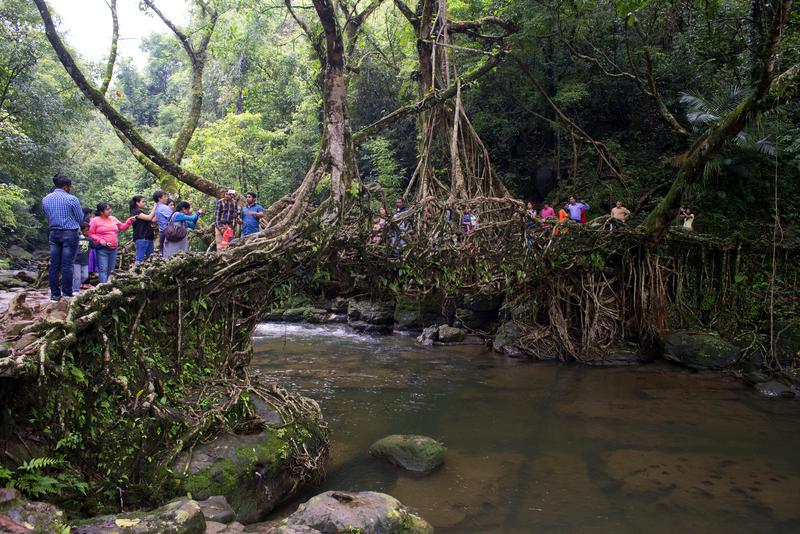The Beauty of Living Root Bridges
By | January 15, 2019


The art of creating living root bridges is done by the people in southern India in Meghalaya. It is a form of shaping trees called Ficus elastica or fig trees by hand to form bridges strong enough for people to actually walk across. Khasi and Jaintia, people who reside in the mountain area of Shillong Plateau, are the people who make these bridges. Other areas where these bridges can be found include Indonesia at Jembatan Akar on the island of Sumatra and also in the Banten area of Java.
No one knows exactly how far back in history these bridges started. It has been recorded though as far back as 1844 because, in the 1844 Journal of the Asiatic Society of Benhal, Lieutenant Henry Yule wrote about how amazing they were. The beauty of them located in the midst of rainforests are simply breathtaking.


This living root ladder is one of the examples of different structures made from the same idea as the living root bridges. Another example is located in the village of Kudeng Rim in West Jaintia Hills where a rubber tree sits next to a football field. The branches were formed to create bleachers for the people of the village to watch football games. In Padu Village, there is a double living root bridge side by side. It is interesting to note that the people who created these bridges and other structures years ago had no training or educational background to know how to do this.

The most famous root bridge in Meghalaya is what is called the “double-decker” and is found in Cherrapunji (or Sohra). A tourist attraction now highlights these bridges there where a retired Tamil banker set up a resort. He features the bridges with guides along trails with different levels of difficulty and duration. The Umshiang Double-Decker Root Bridge is a 4-5 hour long trek with a descent of 2,400 feet. This one, in particular, requires the participants to be in really good physical condition as the bridge itself is 65 foot not to mention the strenuous descent of the trek.
Cherrapunji is considered the wettest place on earth with 11 root bridges that are still functional. These root bridges are in danger of being wiped out though. There is a project underway to help restore them and keep them alive. Some of these living root bridges that are still being used today were built over 500 years ago.

